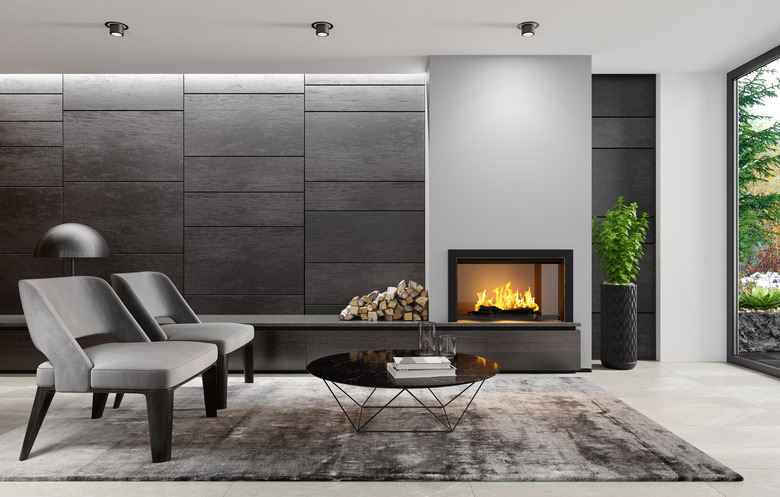How To Operate A Flue In A Wood-Burning Fireplace
We may receive a commission on purchases made from links.
When it's cold outside, a cozy fire is a real treat. Before you light the fire, though, it's important to ensure that you open the damper. If you don't open the damper, smoke will fill your house rather than making its way through the flue and to the outdoors. It's also important to close the damper when the fire is out so that heat doesn't escape.
What Is a Chimney Damper?
What Is a
Chimney Damper?
A damper is a metal plate located in the chimney that you maneuver to manage ventilation and keep out rain and small animals. The flue is a clay or metal liner in the chimney through which smoke flows when you light a fire in your fireplace. A closed damper will restrict airflow and create a safety issue. Smoke will enter your home rather than flowing outside.
When closed, dampers prevent warm or cool air from escaping the flue. Chimneys with damaged or improperly functioning dampers will cause substantial energy loss in your home. Most dampers have a chain or handle that you use to open and close them.
Types of Chimney Dampers
Types of Chimney
Dampers
There are two main categories of dampers. Throat dampers are commonly found in older fireplaces. This type of damper is located just above the fireplace, is generally constructed of steel or cast iron, and is a hinged plate that often looks like a trap door.
A top-sealing or top-mount damper is located on top of the chimney or just inside it. This type of damper is similar to a chimney cap but has other functions. In addition to keeping rain, animals, and debris outside, a top-mount chimney damper creates a more energy-efficient, airtight seal. This is because the top-mount chimney damper has a gasket.
Determining Whether a Fireplace Damper Is Open
Determining Whether a Fireplace Damper Is Open
Determining whether your fireplace damper is open depends on the type of damper you have. If the damper is closed, you will know immediately because your house will fill with smoke. Since this creates dangerous conditions, it's best to ensure that the damper is open before lighting a fire.
Three ways to check whether your fireplace damper is open include:
- Checking for a draft. An open damper will result in air circulating in the chimney, and that
air will make its way into the fireplace. You will feel a cold draft when
you put your hand or face into the fireplace. If you have a top-mount damper,
however, there will be some cold air stored in the chimney. - Doing a visual check. One of the best ways to check if the damper is open is to look. Stick
your head in the fireplace and look up. If it's dark outside, use a flashlight. If you have a throat damper, you will see it closed
above your head, blocking your vision, or it will be open. You can also reach up and touch
a closed throat damper. If you have
a top-mount damper, you should be able to see light at the top during daylight hours if it is open. If it is closed, it will be dark up there. - Checking the damper control. If you're familiar with the damper control of your fireplace,
then you will know
if it is open or
closed by the position of the cable, rod, or handle.
How To Operate a Throat Damper
How To Operate a Throat Damper
Check inside the flue to locate the throat damper control. It may be a lever that you push forward or sideways, or it could be a screw-type handle that you turn clockwise to open and counterclockwise to close. There are also latch control handles. With these, you lift the handle and push it away from you to open the damper and then drop the handle into a latch that holds it open. To close the latch handle, you lift it and pull it forward. Some dampers work in reverse, requiring that you pull toward you to open and push back to close.
How To Operate a Top-Mounted Damper
How To
Operate a Top-Mounted Damper
Top-mounted dampers are operated with a chain. If such a damper is closed, the chain will be hooked to the wall surround of the fireplace. You open the damper by unhooking the chain and allowing it to hang freely. To close the damper, you rehook the chain.
If you are unable to determine whether your damper is open or shut, refrain from lighting a fire. A chimney sweep can assist you with operating the fireplace. Such a professional can also make changes to your fireplace and any needed repairs.
